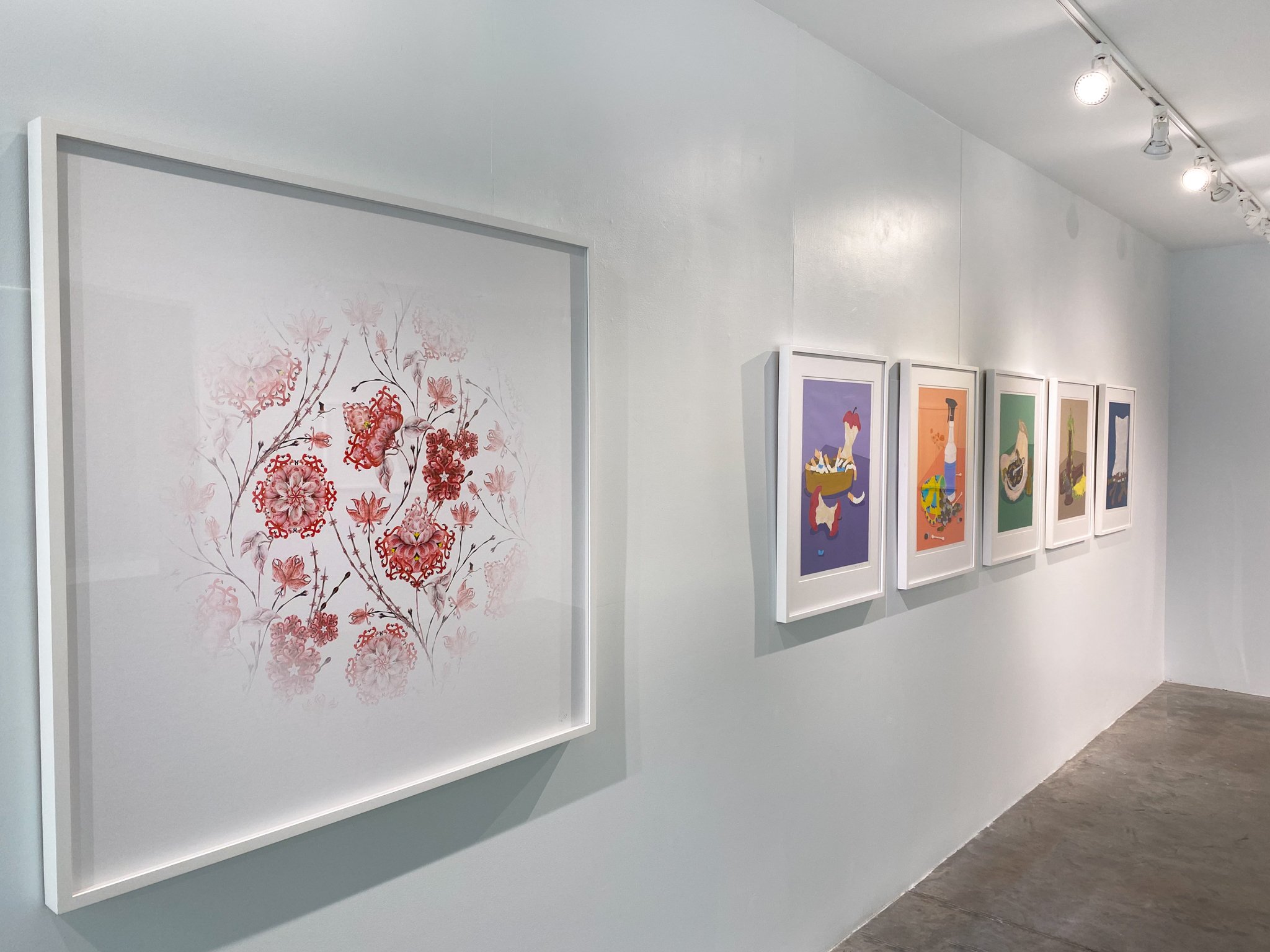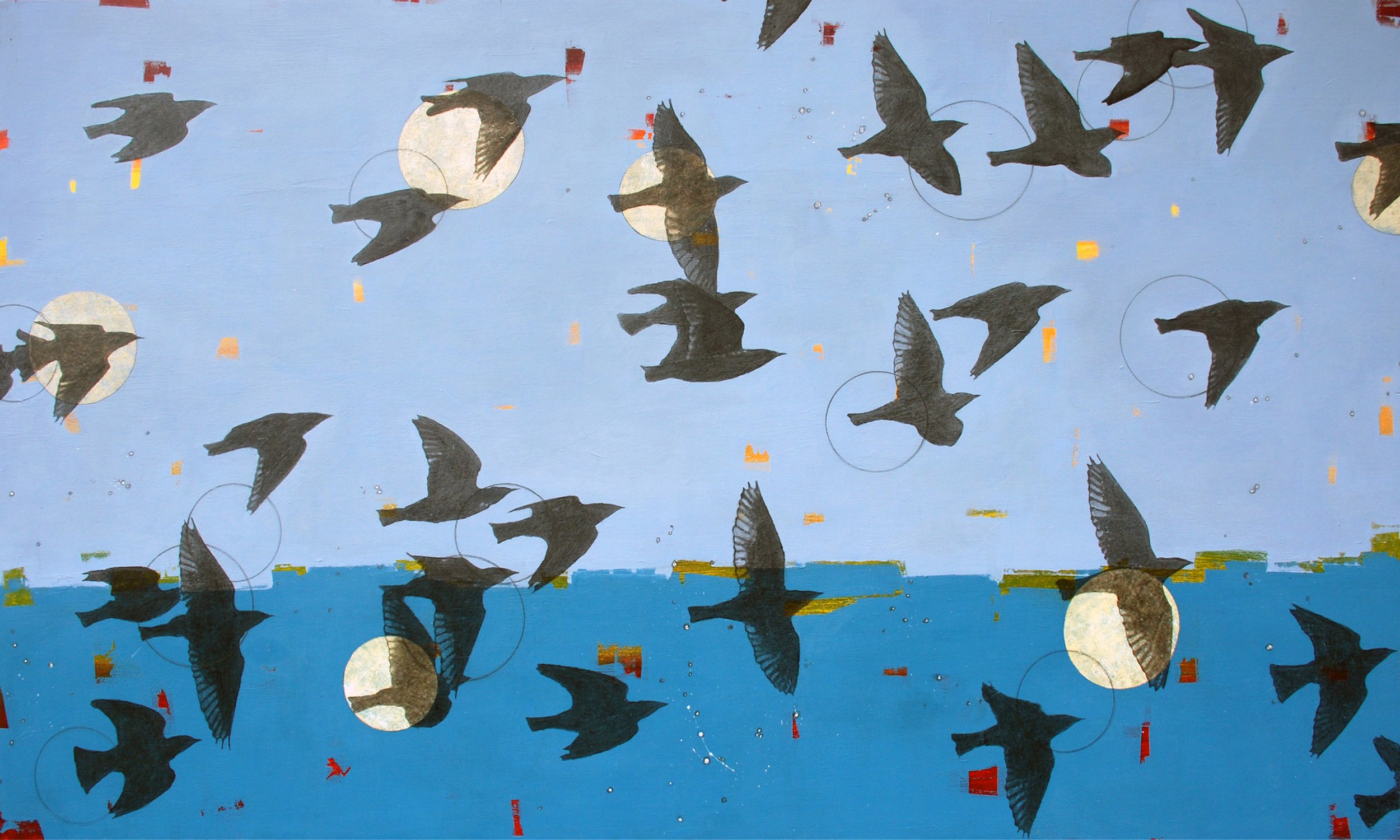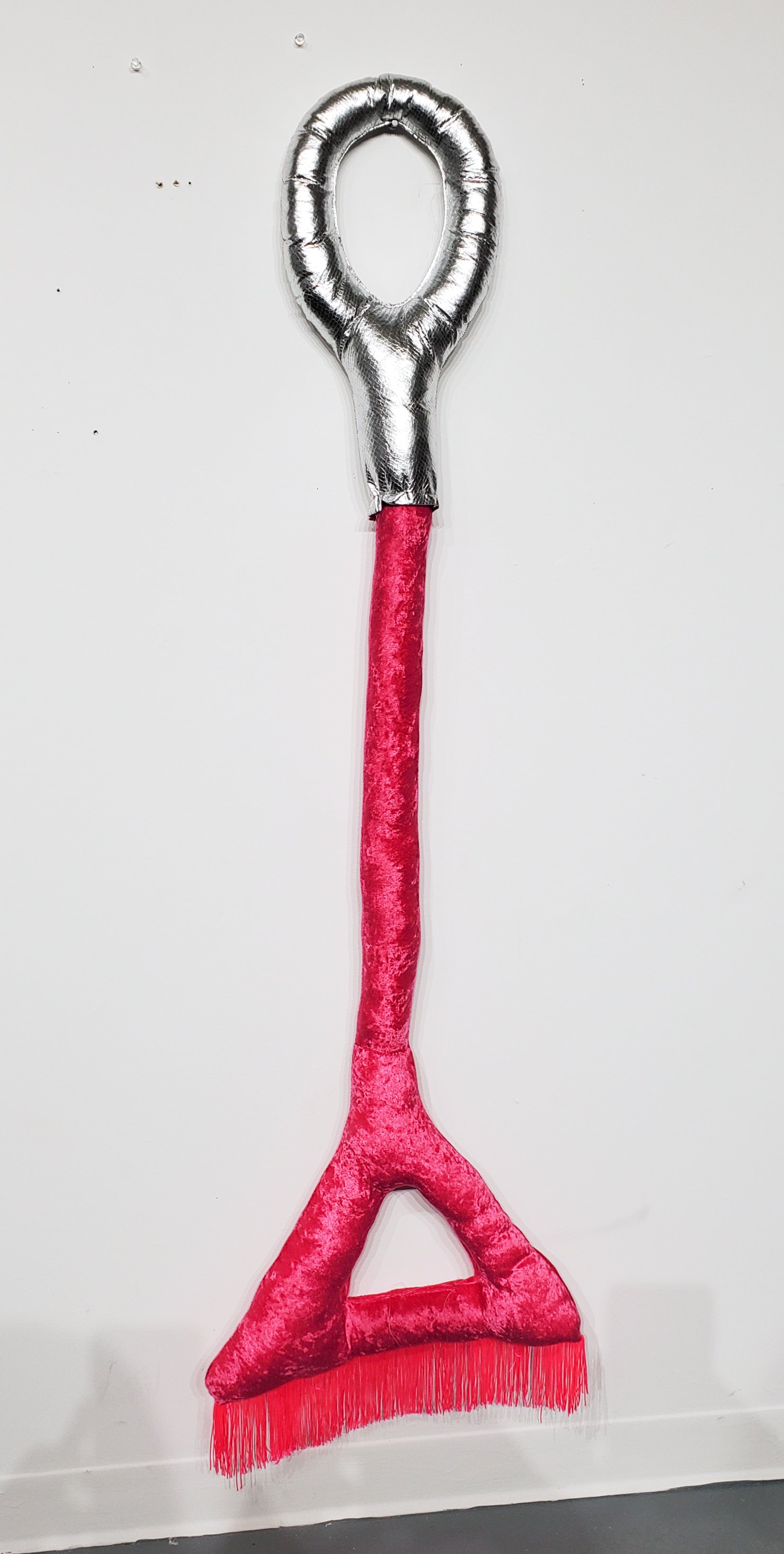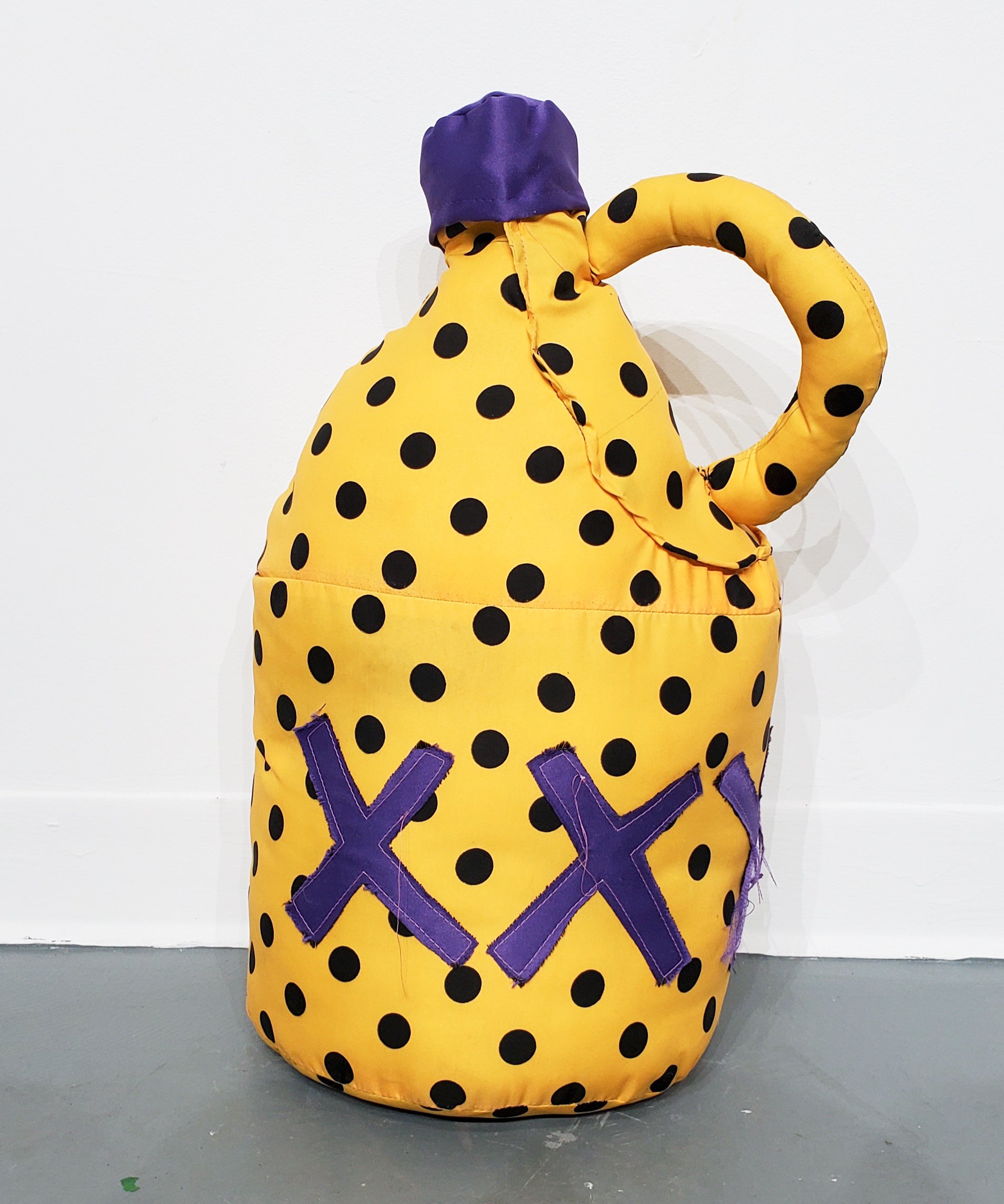July 20 - August 28, 2022
Allison Baker | Holly Harrison | Cassandra C. Jones | Coral Woodbury
Abigail Ogilvy Gallery is proud to present Size Matters, featuring gallery artists Allison Baker, Holly Harrison, Cassandra C. Jones, and Coral Woodbury. These four artists play with scale, quantity, and implicative imagery – sometimes subtle, sometimes overt. Size Matters is dedicated to the constituents; the parts that make up the whole; the pieces that come together to form something larger than the sum of its parts. Demonstrated by the materiality and thematic functions of the work, each artist engages with the idea of collective power in their own way. Embodied first individually, and then reinforced as a group, the exhibition is a force to be reckoned with in a way that aims to radiate the power of united women.
Allison Baker’s color-blocked, still-life collages are created using layered coloraid on coldpress paper. Often working towards a reclamation of domestic spaces, Baker’s work seeks to investigate hegemonic femininity as a site of transgression and resistance. Her work playfully engages scale as a cue to surreality, or that not all is as it appears. The artist’s use of familiar objects – a matchbook, cleaning products, an oyster – create the feeling that something is not quite right and the syrupy artificiality of Baker’s color palette only reiterates this feeling. The objects themselves, recognizable and utilitarian, become devoid of their intended use - a beer bottle becomes a vessel of propagation; a book of matches spills match sticks that bend and contour like fabric; and a pile of melting ice cream sprouts hairy legs to become endearingly anthropomorphic.
Similarly, Cassandra C. Jones’ plays with humor and scale in her work, skillfully rendering images out of scaled down objects and often using the repetition of a singular element to form something entirely new. Her artworks are a reflection of consumerism on our individual images and on our environments. The three cacti in the exhibition are undeniably phallic from afar, but as with all of Jones’ work, closer inspection reveals the curious components of the image: in this case, beach balls. This series was a response to wildfires in California that sent microplastics into the air, soil and water, resulting in a colorful super bloom of flora. Jones intends to render the ease in which our natural world absorbs the objects we delight in.
Coral Woodbury’s artwork is rooted in the reclamation of power. An artist and art historian, Woodbury has spent the past two years tearing through an original copy of Janson’s History of Art, a prominent textbook that completely omitted women until Janson’s death in 1986 – and painting the images of the artists made purposefully absent in this history. There is an undeniable power in numbers, and Woodbury’s aim to rework every page of the text perfectly illustrates this.
Holly Harrison’s exploration of avian motifs stems from a simultaneous appreciation for both the strength and fragility of her subject matter, as she delicately renders each individual bird to create a synchronized, and intermingled flock. The viewer is left with a snapshot of a murmuration, with a collective of birds flying gracefully across the horizon line. As with each of these compelling artists, the work reminds us that we are stronger together; that there is strength in collective power and organized movements; and that when we are a part of something larger than ourselves, none of us are ever truly alone.
—
Allison Baker earned her MFA in Sculpture from the Rhode Island School of Design, a BFA in Sculpture and BA in Gender Studies from Indiana University. Her work investigates hegemonic femininity as a site of transgression and resistance. Allison clawed her way into higher education with a thesaurus and words she cannot pronounce; currently, she is an Assistant Professor of Sculpture and Studio Art at Hamline University where she tries to impart some knowledge of finesse, persuasion, and manual labor.
Holly Harrison lives and works in Concord, MA. She received an MA in creative writing from The City College of New York and a BA from Wesleyan University. Her artwork has been featured at galleries and museums throughout the country and is held in private and corporate collections nationally and internationally. Additionally, she has curated two well-received shows at the Concord Center for the Visual Arts, where she was subsequently invited to join the Board of Trustees.
Cassandra C. Jones was born in Alpine, TX (USA) in 1975 and lives and works in Ojai, CA. She is a graduate of Carnegie Mellon University with an MFA in Interdisciplinary Fine Arts and received her BFA from California College of Arts with a concentration in Photography/Glass. Jones has been awarded artist residencies in Germany, the Czech Republic, Canada, and across the United States, and her work has been exhibited both throughout the United States and in Europe. Select recent exhibitions include: Digital Worlds: New Media from the Museum’s Collection, Museum of Fine Arts Houston, Houston, TX (2018), The Awakening, Abigail Ogilvy Gallery, Boston MA (2017), Ritual and Desire, Wichita Art Museum, Wichita, KS (2017). She has received several awards and residencies, including the Egon Schiele Art Centrum, Drake Hotel Artist Residency, Invitational, Toronto, Canada (2006), and the Vira I. Heinz Endowment awarded by the Virginia Center of Creative Arts (2004).
Coral Woodbury is an historian and as an artist who critically reinterprets Western artistic heritage from a feminist perspective, bringing overdue focus and reverence to the long line of women artists who worked without recognition or enduring respect. Her work reclaims space for them, bringing women together across time and place in art that recasts and re-crafts the story of art. Coral has long worked internationally, beginning with a residency in Italy with Rosenclaire, her mentors for 30 years. She has been honored with a grant from the U.S. National Endowment for the Humanities, and has exhibited at Opening Press Week of the 58th Venice Biennale, the Taragaon Museum in Kathmandu, and in the unsanctioned #00Bienal de la Habana in Cuba. In 2020 her work was selected for Area Code art fair.








